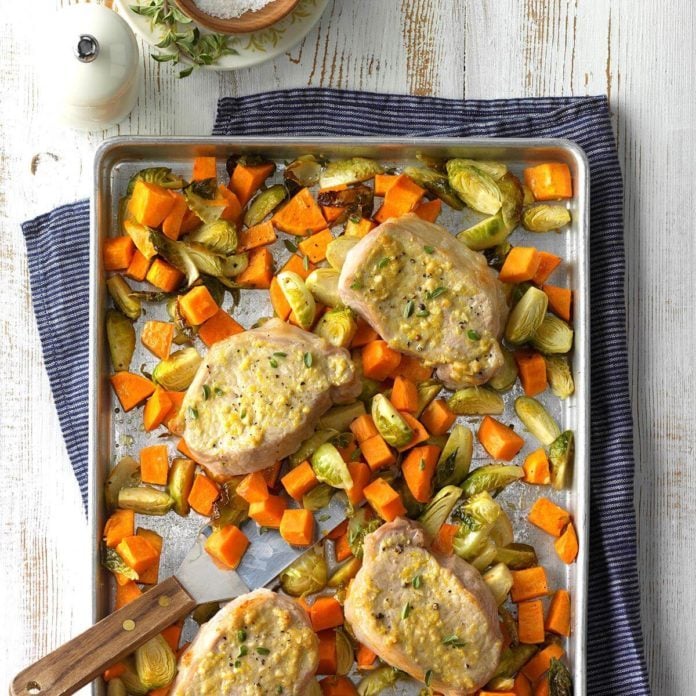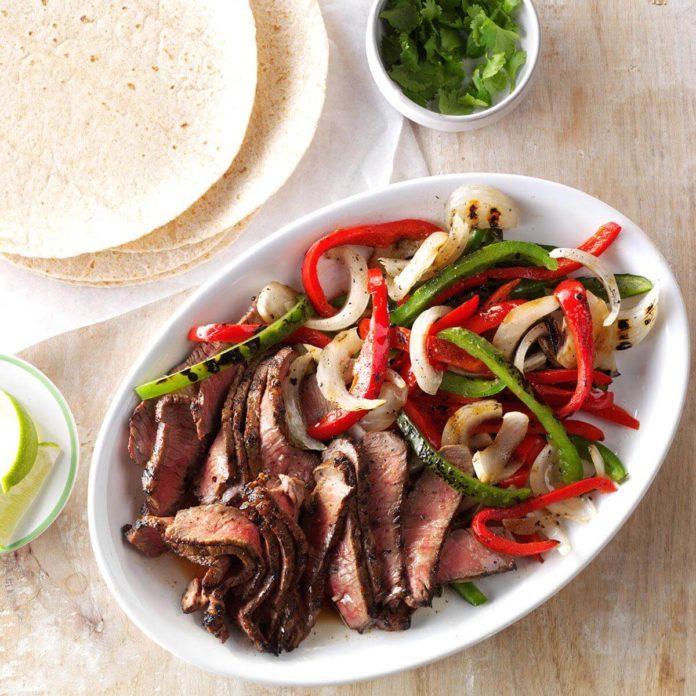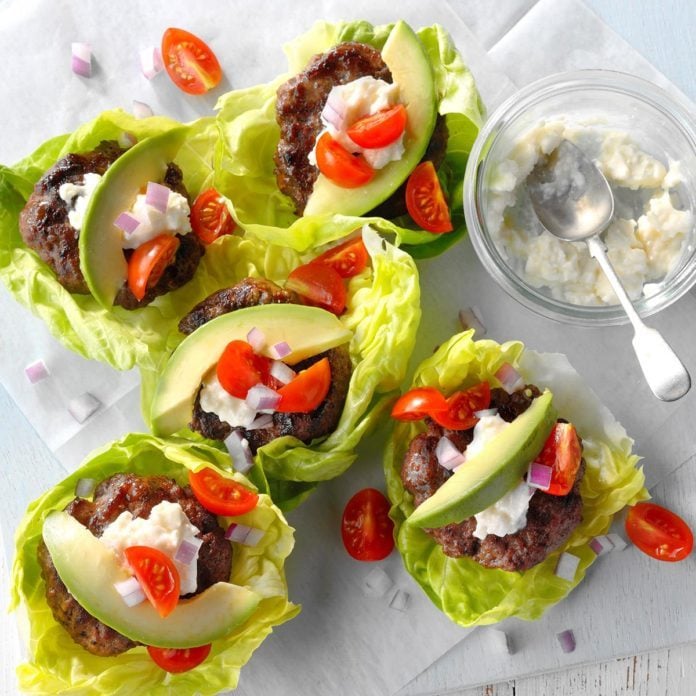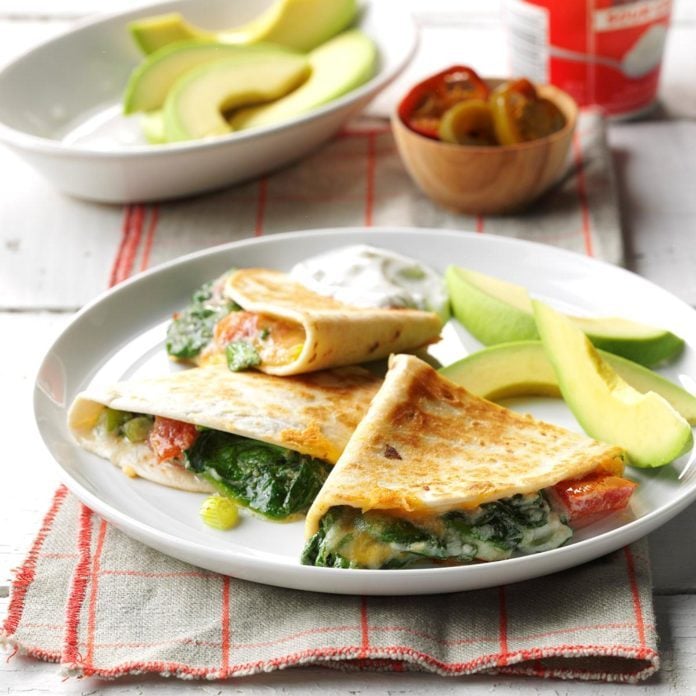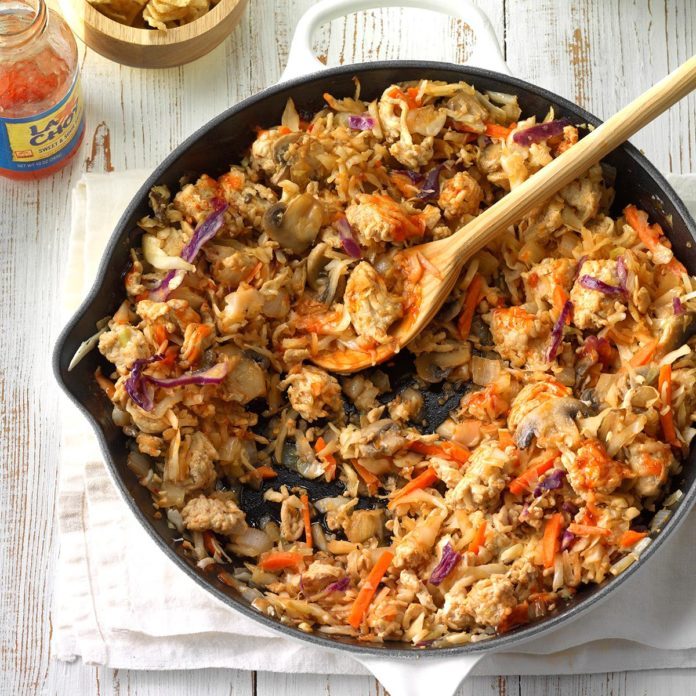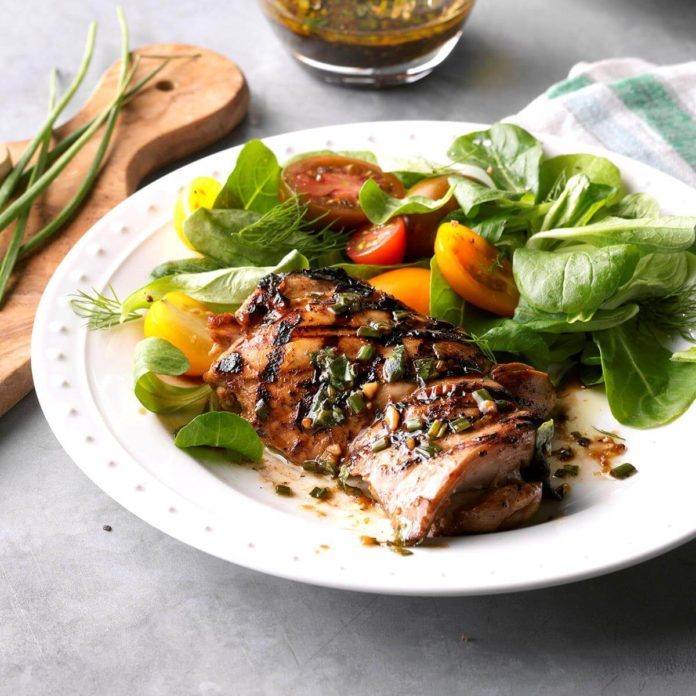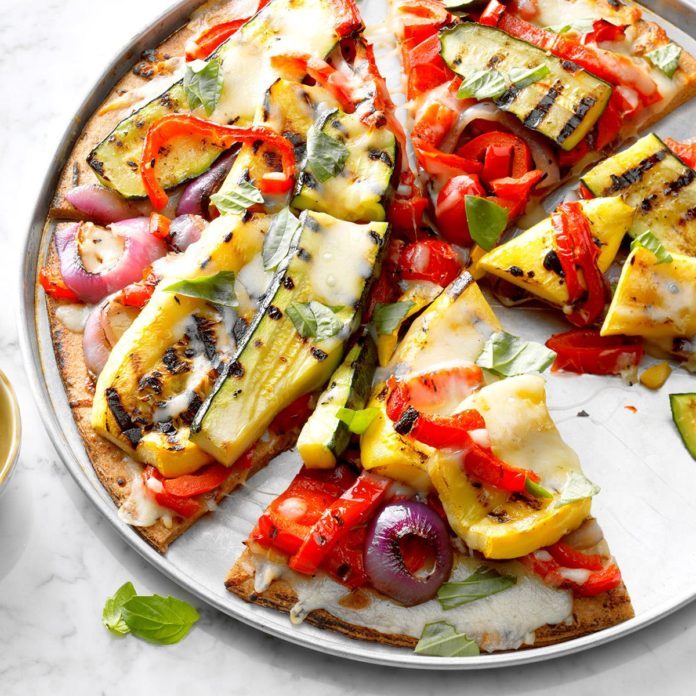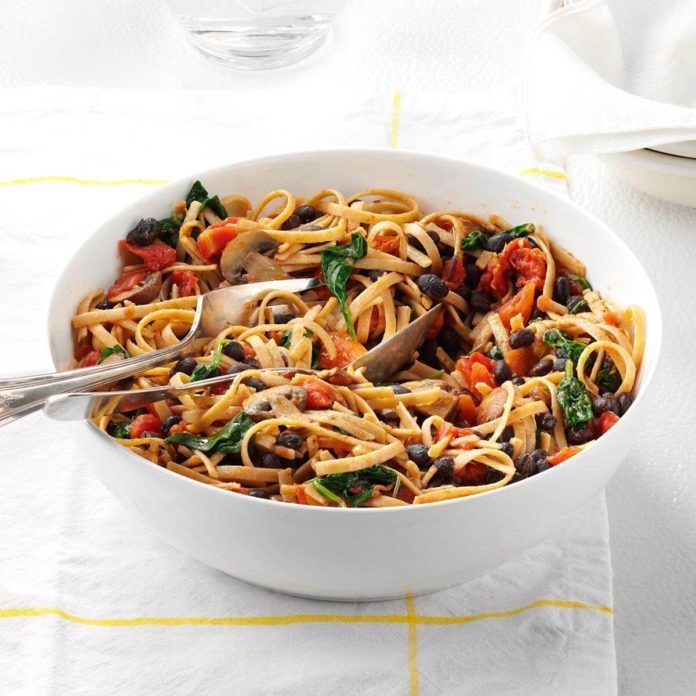Lately, it seems like the word “healthy” is on everyone’s mind. Whether it’s choosing to go low-carb, low-sodium, meatless, Mediterranean or pegan (yep, that’s a thing), people are choosing to redefine the way they eat.
Psst! Here’s how we define healthy eating.
But when you head to the supermarket, where there are literally thousands of ingredients within reach, it’s not always the easiest thing to determine what’s going to be good for your body and what’s not. Common sense says a bundle of kale is better for you than a tub of ice cream—how do you know which pasta sauce is the healthiest? Or if your protein bar is actually a candy bar in disguise?
Allison Kuhn (M.S., R.D., L.N.), Director of Retail Nutrition at Kroger explains, “Eight out of 10 customers are confused about nutrition and regularly doubt what they’re putting in their mouths. Less than half of them can connect a food or nutrient to a health benefit that they care about.” That’s why Kroger has stepped in with a new piece of technology: the OptUP app.
What’s OptUP?
Developed a dedicated team of registered dietitians, analysts and experts, the OptUP app gives you access to comprehensive nutrition information for thousands of products in a super user-friendly way. Kroger’s goal? Make healthy eating more simplified.
Each food item is given a simple 1-100 rating. Less healthy items like a Hershey’s Bar fall to the bottom of the scale, while all fresh produce is ranked at the top of the list (because splitting hairs over the calorie difference between apples and oranges should be the least of your worries). With the click of a button, you can see more detailed nutritional information.
“This is not about telling people what’s good and bad, what you should and shouldn’t eat, instituting food guilt or anything like that,” Kuhns explains. “This is that guidance around balance and intuitive eating.”
How It Works
When using OptUP, you can either search for ingredients or scan items at the store. Let’s see the app in action:
Comparing Ingredients
Oatmeal is one of my favorite breakfasts—especially this Peanut Butter Oatmeal. While I was at the store, I quickly looked up the ingredients I needed in the app: old-fashioned oats, honey, flaxseed—all healthy choices, wahoo! When I got to the PB, I was shocked to see the results. Some of the usual brands I reached for were actually pretty unhealthy.
I compared my favorite peanut butter—which I had thought was pretty healthy—to the other peanut butter brands on the list and was surprised to find that it was one of the least healthy options I could buy. The app then introduced me to a new brand that had a much higher nutritional rating. Hello, healthy creamy peanut butter.

The app also allows you to highlight personalized dietary labels on each product such as Heart Smart, Gluten-Free, Keto-Friendly, No Artificial Sweeteners and more. You can toggle these labels on and off depending on your own specific dietary needs.
Tracking Your Shopping Habits
Another special feature Kroger built into the app—and one I find most appealing—is the ability to track your shopping habits over time. By connecting to your grocery store savings card, the app automatically tracks your purchases and gives you a breakdown of just how healthy your shopping trip was as a whole.
After you shop, you’re able to view your own personal OptUP score which averages the nutritional value of your groceries on a scale of 0-1,000. It even tracks your weekly progress over on a nifty chart. See mine below. Pretty good, huh?

This system makes grocery shopping almost game-like, as you’re urged to raise your score each time you shop. If my score fell a few points, I made sure that my next visit was even better by stocking up on these simple healthy ingredients dietitians always have on hand.
(If you’d like even more grocery guidance, Kroger’s registered dietitians can help.)
Should You Try It?
After testing out this app for a few months, I’d say that it helped me be more mindful at the store—especially when it came to shopping in the packaged goods aisles. However, if you’re one to keep a food diary, know that this isn’t a replacement. Since you’re not technically logging what you eat and to what extent, you might end up overindulging in even the healthiest foods in your shopping cart. Learn about the 12 healthy foods you should only eat in moderation.
Another possible downside is that when you’re purchasing groceries for your friends or family, their eating habits might affect your own OptUP score. But, hey, maybe your healthy choices should rub off on them, anyway?
That all being said, I’d suggest giving the app a go. You might find yourself making healthier choices—or even find a new favorite brand of peanut butter. Download OptUP in the App Store or on Google Play.
Quick and Healthy Dinner Ideas

This super flavorful, nutrient-packed dish makes use of supermarket conveniences like coleslaw mix and rotisserie chicken. This recipe is easily doubled or tripled for large families. —Christianna Gozzi, Asteria, New York
Get Recipe
Most nights, I need something that I can get on the table with minimal effort and delicious results. This sheet-pan supper has become an all-time favorite, not only because of its bright flavors, but its speedy cleanup time, too! —Elisabeth Larsen, Pleasant Grove, Utah
Get Recipe
After moving to a new state with two toddlers in tow, I came up with effortless fajitas. They make an easy weeknight meal on the grill or in a cast-iron skillet. —Shannen Mahoney, Odessa, Missouri
Get Recipe
If you'd like a little extra crunch with this colorful chop suey, serve with chow mein noddles. —George Utley, South Hill, Virginia
Get Recipe
I love the way these fresh flavors blend together. It's a snap to throw this together using leftover burgers for a quick, healthy lunch. The burgers can also be served on buns. —Rachelle McCalla, Batesville, Arkansas
Get Recipe
This recipe showcases the beautiful bounty of summer with its fresh corn, tomatoes and delicious basil. Prevent browning by placing plastic wrap directly on the salad or spritzing with lemon juice. —Deena Bowen, Chico, California
Get Recipe
I put a Hawaiian twist to classic chimichurri thanks to pineapple and macadamia nuts. For a spicier version, substitute red serrano pepper for the bell pepper. —Naylet LaRochelle, Miami, Florida
Get Recipe
My family gave these cheesy quesadillas oohs and aahs. Remove the spinach from the heat as soon as it wilts so it keeps a little bit of crunch. —Pam Kaiser, Mansfield, Missouri
Get Recipe
I developed this flavor-packed dinner for a busy friend who wants to eat clean. —Nicole Stevens, Austin, Texas
Get Recipe
Frying anything at home is a little intimidating for me, but I love egg rolls. With this recipe, I've figured out a way to get the best part of the eggroll—without the mess. If you prefer a traditional egg rolls made with wrappers, you can use this as the filling! —Sue Mitchell, Leakey, Texas
Get Recipe
Our kitchen is tiny and cramped, so we try to grill simple (but tasty) meals outside as often as possible during the summer months. Dried herbs work as well, but during the summer use fresh herbs for the best taste. —Kelly Evans, Denton, Texas
Get Recipe
I developed this one-skillet spaghetti and meatball dish to cut down on cooking time for busy nights. The beans, artichokes and tomatoes bump up the nutrition factor, while the lemon and parsley make it pop with brightness. —Roxanne Chan, Albany, California
Get Recipe
On a really busy day, this meal-in-a-bowl is one of my top picks. It's quick to put together, leaving a lot more time to relax at the table. —Mary Relyea, Canastota, New York
Get Recipe
I found fresh ground chicken at the butcher and gave it a whirl on our new grill. The result is these saucy burgers. Everybody went nuts—including my sister-in-law, an amazing cook! —Wendy Boughton, Victoria, British Columbia
Get Recipe
This moist and tender chicken comes complete with its own creamy spinach side dish! It makes a pretty presentation and comes together in no time flat for a nutritious weeknight meal. —Genna Johannes, Wrightstown, Wisconsin
Get Recipe
This recipe combines delicious whole wheat pasta with the best of fresh garden produce. It's tossed with heart-healthy olive oil, and a little feta cheese gives it bite. —Angela Spengler, Tampa, Florida
Get Recipe
If you like a good stir-fry, this dish will definitely satisfy. I discovered the recipe at an international luncheon, and it's now a favorite go-to meal. —Denise Patterson, Bainbridge, Ohio
Get Recipe
My husband and I love bruschetta, especially in the summertime with fresh tomatoes and herbs from our garden. —Kristy Still, Broken Arrow, Oklahoma
Get Recipe
The honey and garlic sauce on this pork is so good, I sometimes double it so there's extra for dipping whatever veggie we have on the side. —Michelle Smith, Eldersburg, Maryland
Get Recipe
Pile on the veggies—this crisp, grilled crust can take it! This colorful, healthy pizza looks as fresh as it tastes. —Diane Halferty, Corpus Christi, Texas
Get Recipe
On busy days, it's a comfort to know that my family can sit down to dinner minutes after we walk in the door. Double it to wow at a potluck. This recipe works in a slow cooker, too. —Virginia Krites, Cridersville, Ohio
Get Recipe
This is one of my husband's all-time favorite meals. I've even converted some friends to fish after eating this. I serve it with fresh melon when it's in season to balance the subtle heat of the cabbage mixture. —Elizabeth Bramkamp, Gig Harbor, Washington
Get Recipe
I combined several recipes to come up with my healthier twist on traditional pad thai. My version has only one-third the sodium of frozen versions you find in the store. —Beth Dauenhauer, Pueblo, Colorado
Get Recipe
We love anything that is tangy or has bacon. With fennel and tarragon, this is a super savory dish. I use the medley from Minute Rice if I don't have time to make my own. —Ann Sheehy, Lawrence, Massachusetts
Get Recipe
A few people in my family have special dietary needs, but luckily, these chicken tacos work for all of us. I toss up a simple green salad and have a meal we can all enjoy together. —Christine Schenher, Exeter, California
Get Recipe
I reel in compliments with these moist, crispy-coated fillets whenever I serve them. Heart-healthy omega-3 oils are an added bonus with my simple but delicious entree that’s done in mere minutes. It's one of the best red snapper recipes I've found. —Charlotte Elliott, Neenah, Wisconsin
Get Recipe
Tender, hearty and flavorful, this recipe is one of my favorites! Garlic and a splash of lemon add to the fresh taste and heart-healthy benefits of shrimp. —Sarah Hummel, Moon Township, Pennsylvania
Get Recipe
I found something similar to this years ago and have recently added my own spin. Here’s the outcome: an easy, cheesy meal your family can't get enough of. We don't have to tell them it's healthy. —Deborah Williams, Peoria, Arizona
Get Recipe
No matter how you toss 'em up, shrimp and thyme play nicely with any spring-fresh vegetable. —Taste of Home Test Kitchen
Get Recipe
I throw this sweet-savory chicken dish together in no time. I serve it with rice and steamed broccoli, and the whole family loves it. —Trisha Kruse, Eagle, Idaho
Get Recipe
his light and spicy shrimp dish comes together easily. My favorite pasta to use is capellini, but angel hair works fine if it isn’t available. —Thomas Faglon, Somerset, New Jersey
Get Recipe
This quick-to-fix entrée will instantly transport you to the Southwest. Salsa plays lively counterpoint to the juicy pineapple-sweetened pork chops.—Lisa Varner, El Paso, Texas
Get Recipe
I like to include seafood in our weekly dinner rotation but don't want to bother with anything complicated (and it had better taste good or the family will riot). This herbed fish does the trick. —Trisha Kruse, Eagle, Idaho
Get Recipe
This recipe was inspired by eating charbroiled chicken skewers while strolling along Calle Ocho in Miami on Sunday afternoons. I like to garnish mine with sesame seeds. —Wolfgang Hanau, West Palm Beach, Florida
Get Recipe
This was something I created as a teenager, back when I was a vegetarian. Now that my daughter doesn't eat meat, she asks for this dinner several times a week. —Ashlynn Azar, Beaverton, Oregon
Get Recipe
The post Kroger Plans to Change the Way You Shop for Groceries appeared first on Taste of Home.
Nicole Doster



